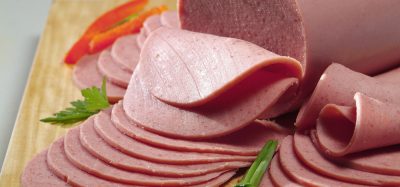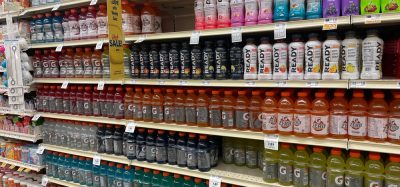Is the next melamine scandal looming?
- Like
- Digg
- Del
- Tumblr
- VKontakte
- Buffer
- Love This
- Odnoklassniki
- Meneame
- Blogger
- Amazon
- Yahoo Mail
- Gmail
- AOL
- Newsvine
- HackerNews
- Evernote
- MySpace
- Mail.ru
- Viadeo
- Line
- Comments
- Yummly
- SMS
- Viber
- Telegram
- Subscribe
- Skype
- Facebook Messenger
- Kakao
- LiveJournal
- Yammer
- Edgar
- Fintel
- Mix
- Instapaper
- Copy Link
Posted: 17 November 2021 | Chris Elliott | No comments yet
With the demand for plant-based products rocketing and as the call for protein-rich alternatives increases, Professor Chris Elliott questions whether history will repeat itself, as he warns of another melamine scandal.


The melamine scandal started in 2008 when it was revealed that unscrupulous criminals in more than 20 companies across China had found a way to cheat in their dairy industry. It’s important to understand how this mass-scale fraud happened to appreciate why I believe there’s substantial opportunities for a similar occurrence not far down the road.
The price that milk fetches in the market is based on several factors – one of the most important being its protein content. This can be ascertained by measuring the amount of nitrogen present and then extrapolating this to quantify the levels of protein present.
Melamine is a chemical compound used to produce a wide range of plastic products and is essentially a ball of nitrogen. Hence, adding it to milk gave a false indication about the amount of protein present. The scam had been running for some time, with the criminals failing to realise or care that melamine is highly toxic. This characteristic manifested itself in the worst possible way when hundreds of thousands of babies in China were hospitalised due to kidney problems. Sadly, a number of these infants died. The melamine scandal sent shock waves across China and beyond and has left a legacy of mistrust of the Chinese food system that is slowly being repaired, even more than a decade later.
Alternative meat sector at risk of melamine
I discuss this event now as I have been thoroughly researching the challenges and opportunities that will come from the booming alternative meat industry. This market is currently worth around $10 billion per year but is estimated to reach $140 billion by 2030. My mindset always looks for opportunities for fraud in any emerging market and I see huge potential for criminals to exploit this one.
Firstly, the prices of numerous plant-based proteins are soaring, with soya, wheat and pulse prices rocketing , especially pea protein, which is hugely in demand, exacerbated by crop failures that have resulted in massive shortfalls in supply. Secondly, many of these proteins are sold as heat extruded products, which are often then converted to protein powders to reduce their bulk to keep transportation costs down. When I look at photos of these white powders, I cannot tell any of them apart. So, I ask: ‘What is to stop the mixing and blending of these with each other or other forms of bulking materials for that matter?’ I see multiple risks from this potential malpractice, but I can write about that on another day.
The third potential for fraud I can envisage is by far the most worrying. Having asked several industry contacts who are buying these white powders what their criteria are for purchasing decisions, the most important was cited as protein content. The addition of melamine to alternative proteins must therefore be considered a real and imminent threat; it is in my books anyway.
But there is more to be concerned about; melamine can be tested for and since the scandal in China many tests have been introduced, but this alone will not provide a definitive answer. Since the melamine scandal, a group of excellent Chinese researchers I work with have attempted to identify other potential balls of nitrogen that could be used instead of melamine. The last time I spoke with them the list had reached over 60 – all widely available low-cost products from the pharmaceutical and petrochemical industries. So, the testing for nitrogen additions to alternative proteins is a very new challenge.
The final point I wish to make about the alternative proteins market is that they appear to be very opaque in terms of their supply chains. Perhaps a few of the big names will have some control on this, but I doubt it’s to the requisite levels. As for the smaller companies who trade in the ‘wild west’ marketplace, one can only imagine what they might end up putting in our food.
Related topics
Food Fraud, Food Safety, Outbreaks & product recalls, Plant based, recalls









